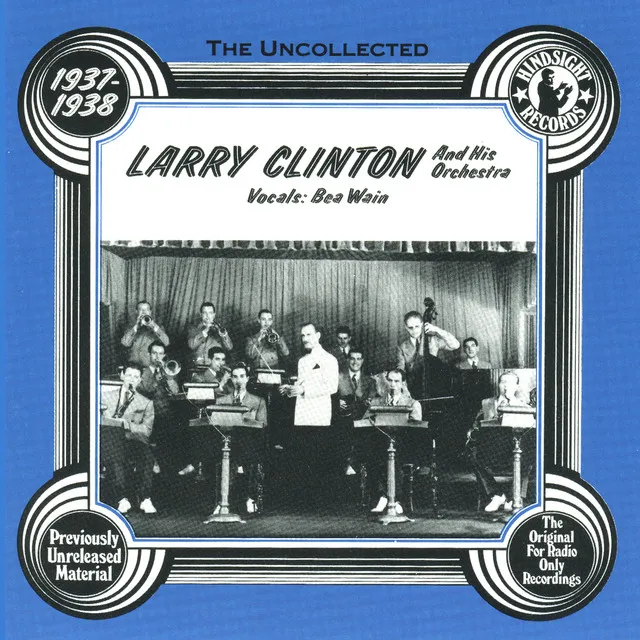Larry Clinton was a versatile composer, arranger, and bandleader whose swing band was one of the dominant forces in pop music in the late '30s, specifically in the period between Tommy Dorsey's initial success and the rise to fame of Glenn Miller. Born in Brooklyn, Clinton broke into the business as an arranger on the staff of Ferde Grofé & His Orchestra, which formed in 1932 in the wake of the rift between Grofé and Paul Whiteman; Clinton also held down a trumpet chair in the Grofé band for a time. Upon leaving Grofé, Clinton joined the arranging staff of the Dorsey Brothers Orchestra, but continued to write charts on a freelance basis for other leaders. When the Dorsey Brothers split in 1935, Clinton went with Jimmy Dorsey, but it was an arrangement placed with Tommy Dorsey's band, "The Dipsy Doodle," that established Clinton's name with the public. On the strength of that hit, Clinton formed his own band in late 1937, graced with the extraordinary talents of girl singer Bea Wain and the rough but personable singing of "Boy" Ford Leary. Some of the hits Clinton enjoyed in the late '30s were with songs of such significance that his connection in introducing them has become forgotten; the ever-prevalent favorite of amateur pianists "Heart and Soul" and "Deep Purple" were among the tunes Larry Clinton made famous.
Clinton's specialty was "jazzing the classics," transforming familiar classical melodies into dance hits; for example, Claude Debussy's early piano piece Reverie became "My Reverie" and an enormous hit with a lovely Bea Wain vocal. Clinton also similarly transformed music by Tchaikovsky, Flotow, and the hoary anthem "I Dreamt I Dwelt in Marble Halls" into solid sensations -- musicians' scuttlebutt of the era in reference to Clinton eulogized such efforts as "it goes into one ear and flows out of his pen." Purists cried "desecration," but Clinton defended his work by stating that he was bringing quality music to the dancefloor. Clinton did have some hot players in his band, but seldom if ever used them to contribute solos to raise the heat; as one would expect from an arranger's band, the emphasis was on precise execution of his dance charts as written. Several of Clinton's other compositions were more challenging, representing an interest in the "egghead jazz" of Raymond Scott and Ray Noble in pieces such as "Strictly for the Persians" and "The Campbells Are Swingin'." Many of Clinton's original pieces reflect an interest in the supernatural and Satanism, such as "Midnight in the Madhouse," "Shades of Hades," "The Devil with the Devil," "Satan in Satin," "Study in Surrealism," and one 1938 vintage number that perhaps was a premonition of things to come -- "I Want to Rock (Rock Solid Rock)."
Larry Clinton broke up his big band in 1941 in order to join the military as a pilot. He was commissioned as a flight instructor, served with distinction, and was well decorated for his efforts. After the war, Clinton worked for the short-lived Cosmo label, worked at Kapp, and re-recorded his hits with a pickup band in hi-fi sound with singer Helen Ward for his old haunt, RCA Victor. Nevertheless, the big-band business was dead, and Clinton retired from music in 1961 to pursue other interests, mainly writing fiction. Clinton's work is unfairly neglected and is often referred to as "Mickey Mouse" or as having "no jazz interest." However, it was highly intelligent, sophisticated, and extremely well-played music, and Wain in particular was a major artist, a singer every bit as good as her competitors, who included Helen Forrest, Nan Wynn, and the young Ella Fitzgerald. So while Larry Clinton may not have led the jazziest swing band, it was nonetheless a fun and exciting dance orchestra, and his 214 78-rpm sides for Victor and Bluebird -- Clinton's core output -- are well worth remembering and appreciating on their own terms. ~ Uncle Dave Lewis, Rovi



